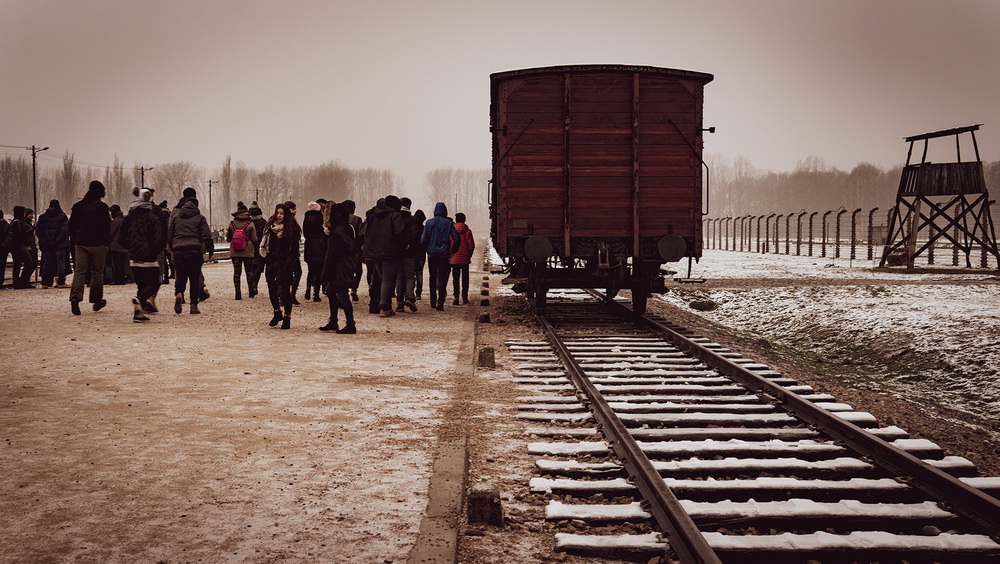Since the exhibition was opened on the 1st of December 2017 in Madrid, it has been thriving. As it received more that 450.000 visitors it was extended until the February 2019.
“Auschwitz. Not so long, Not far away” – it's the largest travelling exhibition about Holocaust and Auschwitz in the history. Its purpose is to familiarize people from around the world with this topic and it will travel around 14 cities – 7 in Europe and 6 in the North America in the future. Currently, you can see it in the Arte Canal Exhibition Centre in Madrid.
Remarkable success in Spain
Since the exhibition was opened on the 1st of December 2017 in Madrid, it has been thriving. As it received more that 450.000 visitors it was extended until the February 2019. It has noteworthy collection of 600 objects from the most important Holocaust memorial centers and is going to extend it by some new items. Its unusual popularity speaks for itself – it is extremely attractive for the visitors. It’s worth mentioning, that it has prepared more than 100.000 free tickets for schools which attracted many educational institutions. People can discuss and somehow try to explain, in the context of Holocaust, how come there was this lack of respect for human rights in concentration camp. Although the background is not easy, still so many people come to the exhibition to find the answer and to learn something important. It’s definitely one of the most significant aspects of the exhibition – to teach other, not only children, to become aware of these dark events in history.
See the unique collections
The thing, which arises such interest in the exhibition, is its remarkable collection and the way that it is presented. It includes the exceptional 600 objects from over 20 museums and institutions from all over the world.
You’ll have a chance to see the original barrack form Auschwitz concentration camp, where prisoners were sleeping. It reflects the inhuman conditions, that they had to struggle with: unbelievable squash, cold and no privacy. There is also a freight wagon that was used for the transportation of Jews to ghettos or camps. It was usually extremely crammed with people and many of them was not able to survive the transport.
One of the most interesting objects of the exhibition is the Board game Juden Raus. During the occupation period it was sold in Germany as ‘the amusing family game’ and was very popular among the free citizens. The rules were simple – try to land on the field with Jewish shop and kick him out of the city. You’ll also see prisoners’ uniforms with a badge indicating a category of inmate. Smart uniforms tailored by German tailor Hugo Boss – proud member of both the Nazi Party and the SS, are also part of the collection. The symbol of mass extermination – Zyklon B gas can reminds us about cruel death of thousands of people in numerous gas chambers. Many more objects in the collection including prisoner’s utensils or Nazi’s belt buckles are waiting for visitors to intrigue, affect, enrage or shock.
Discover the origins of travelling exhibition
The Auschwitz-Birkenau Memorial and Museum (http://auschwitz.org/en/) is located in Oswiecim in the Southern Poland. It is an extremely important heritage for the country and for the whole world as well. Travelling exhibition is all about this place and things that were happening there during the Word War II. However, if you have a chance, you should visit the Polish museum as well. Nothing conveys the atmosphere of those events than the place of its origins. It extends on an area of 190 ha and includes numerous historic buildings and objects from the wartime. Set up in 1940 by Germans, it was transformed into museum in 1947. However, it took only a few years to murder over a 1,1 million people. The camp was divided into 3 main parts and over 40 sub-camps with thousands of slave laborers. Although Germans tried to destroy all the evidences of their crimes and the whole Holocaust in general, they didn’t manage to do away with everything, fortunately.
The museum receives millions of tourists from around the world every year. It’s on the UNESCO list of World Heritage Site and is very active in the contemporary world as it organizes many conferences and invites important figures from different countries.
Auschwitz-Birkenau – how to get there
The best way to get to Auschwitz is to take a tour from Krakow, that is located around 70 km from Oswiecim. There are many buses going there every hour from the main station. The rides take around 1h 10 min. You can also take a train to Oswiecim, but the journey takes a little bit more time.
Another recommended option is to take a private guided tour from Krakow. It provides comfortable ride and professional guide who will assist you during your visit in the museum. You can book a tour with the KrakowDirect (https://krakowdirect.com/auschwitz-tours/) in two options: private and group as well.
Follow the Holocaust story around the world
If you’re interested in the subject and history of Holocaust, there are some significant places around the world worth to see. They all cooperate with each other which helps in preserving the precious heritage and historical true. Auschwitz. Not so long. Not so far. exhibition was created due to the collaboration with those institutes and museums. Here are the most important ones that you can follow and visit the world at the same time:
- Yad Vashem in Jerusalem – The World Holocaust Remembrance Center
- United States Holocaust Memorial Museum in Washington
- Jewish Museum in London – History, identity and culture of Jews in Britain
- Anne Frank House in Amsterdam
- Montreal Holocaust Museum in Canada
- Herinneringscentrum Kamp Westerbork – Hooghalen in Netherlands
- Holocaust Center for Humanity in Seattle






































































































































































